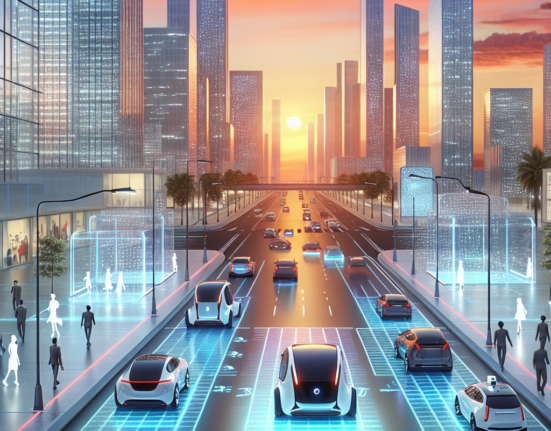From Sci-Fi to Reality: The Latest in Autonomous Vehicle Technology
In the not-so-distant past, the concept of a self-driving car was primarily the domain of science fiction, woven into the fabric of futuristic narratives in books, films, and television shows. Today, however, what was once a figment of imagination is rapidly becoming a tangible reality, with autonomous vehicle technology transforming the landscape of modern transportation.
The Evolution of Autonomous Vehicles
The journey from drawing board to the road has been a fascinating one, marked by numerous technological breakthroughs and a growing ecosystem of companies and researchers dedicated to bringing full autonomy to our roads. From the initial experiments with rudimentary autopilot systems to the sophisticated, AI-driven vehicles of today, each step has brought us closer to the autonomous highway of the future.
Technology Behind Self-Driving Cars
At the core of autonomous vehicle technology is a combination of advanced sensors, machine learning algorithms, and powerful onboard computers capable of processing vast amounts of data in real time. These vehicles rely on a mix of light detection and ranging (LiDAR), radar, cameras, and GPS to create a comprehensive understanding of their surroundings and navigate roads safely.
-
LiDAR and Radar: These technologies are crucial for providing accurate distance measurements and detailed 3D maps of the vehicle’s environment, allowing it to detect obstacles, pedestrians, and other vehicles with high precision.
-
AI and Machine Learning: Algorithms analyze sensor data to make quick decisions, optimizing routes and responding to dynamic driving conditions. Machine learning helps continuously improve vehicle perception and reinforce safety measures.
- V2X Communication: Vehicle-to-everything (V2X) communication is an emerging technology enabling vehicles to communicate with each other and surrounding infrastructure, facilitating better traffic management and enhanced safety measures.
Recent Advancements and Milestones
In recent years, there have been significant advancements in autonomous vehicle technology, both in software capabilities and regulatory progress. Companies like Waymo, Tesla, and Cruise are leading the charge, deploying test fleets in urban areas and refining their technologies in real-world scenarios.
-
Waymo has expanded its robotaxi service in multiple cities, offering a glimpse of a future where hailing an autonomous ride is as commonplace as ordering a rideshare today.
-
Tesla continues to push boundaries with its Full Self-Driving (FSD) software, which aims to offer a highly automated driving experience, albeit still within the boundaries of requiring driver supervision.
- Cruise, backed by General Motors, has been testing its autonomous vehicles across various metropolises, gathering invaluable data to refine its systems and increase reliability.
The Road Ahead: Challenges and Opportunities
Despite impressive progress, the road to fully autonomous vehicles is not without its challenges. Technical hurdles include developing robust AI capable of handling rare or unforeseen scenarios, ensuring cybersecurity, and creating fail-safe mechanisms to deal with technical malfunctions.
Moreover, there are substantial regulatory, ethical, and societal considerations to address. Governments around the world are grappling with crafting new policies to ensure safety without stifling innovation, while public perception and trust in autonomous technology continue to evolve.
Conclusion
The advance of autonomous vehicle technology is one of the most exciting developments in modern transportation. While there are challenges to overcome, the potential benefits in terms of safety, efficiency, and accessibility are profound. As we watch this technology transition from the test track to the highway, one thing is clear: the future of travel is on the horizon, and it’s driving itself.














Leave feedback about this
You must be logged in to post a comment.